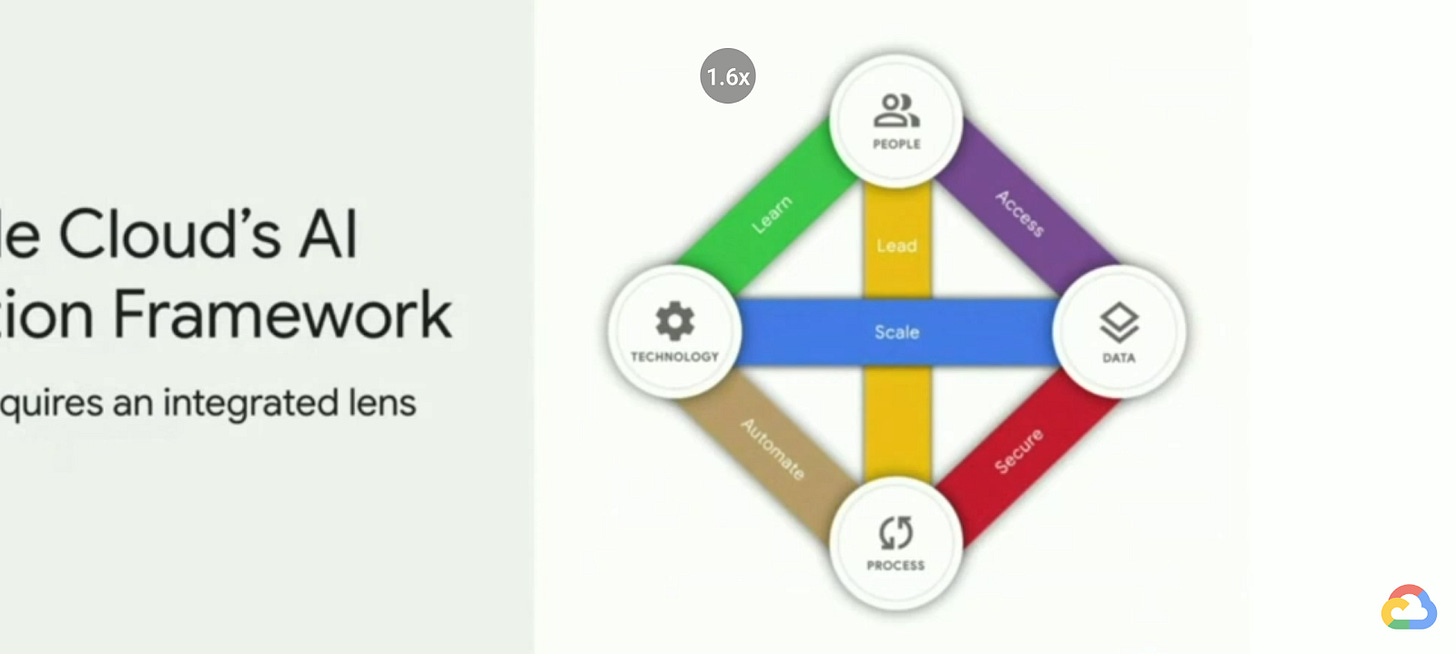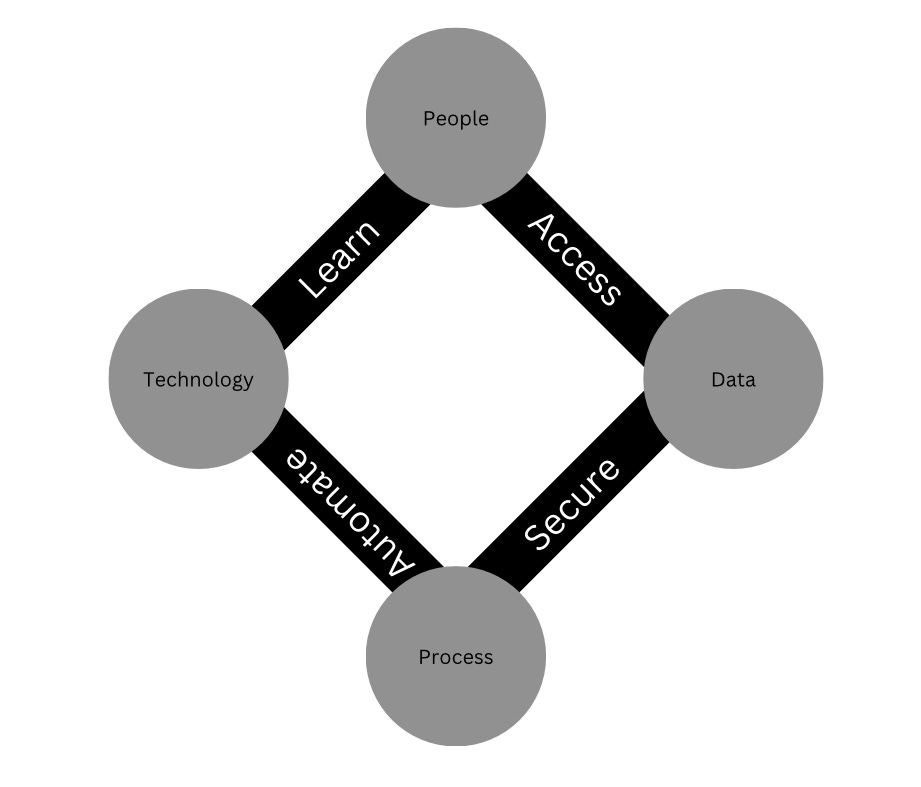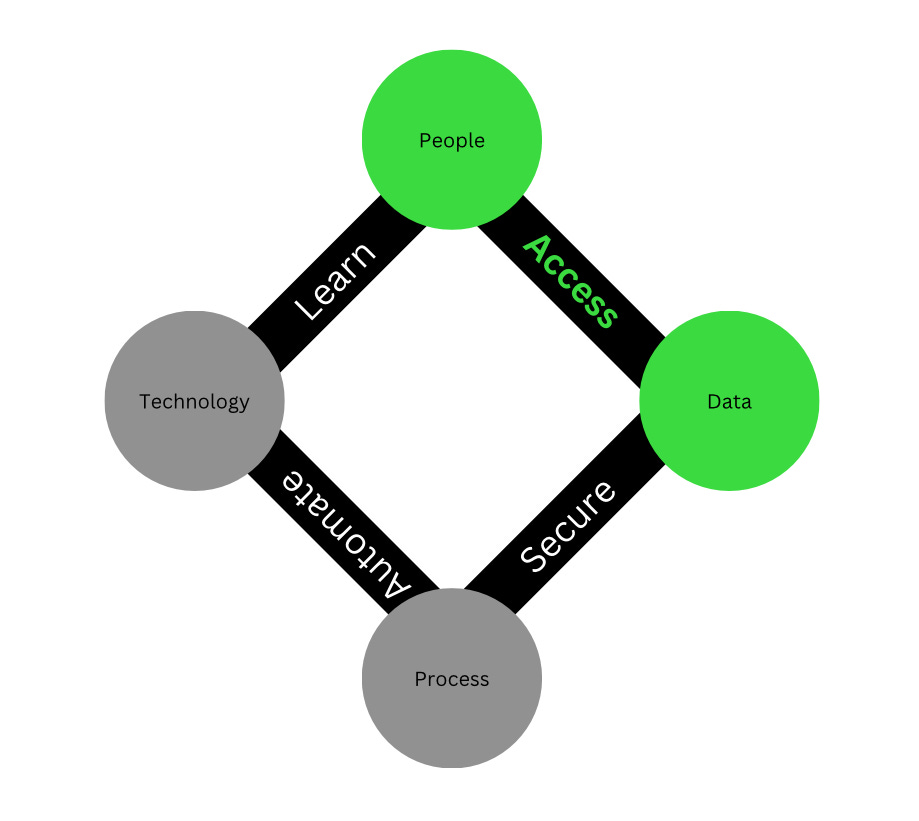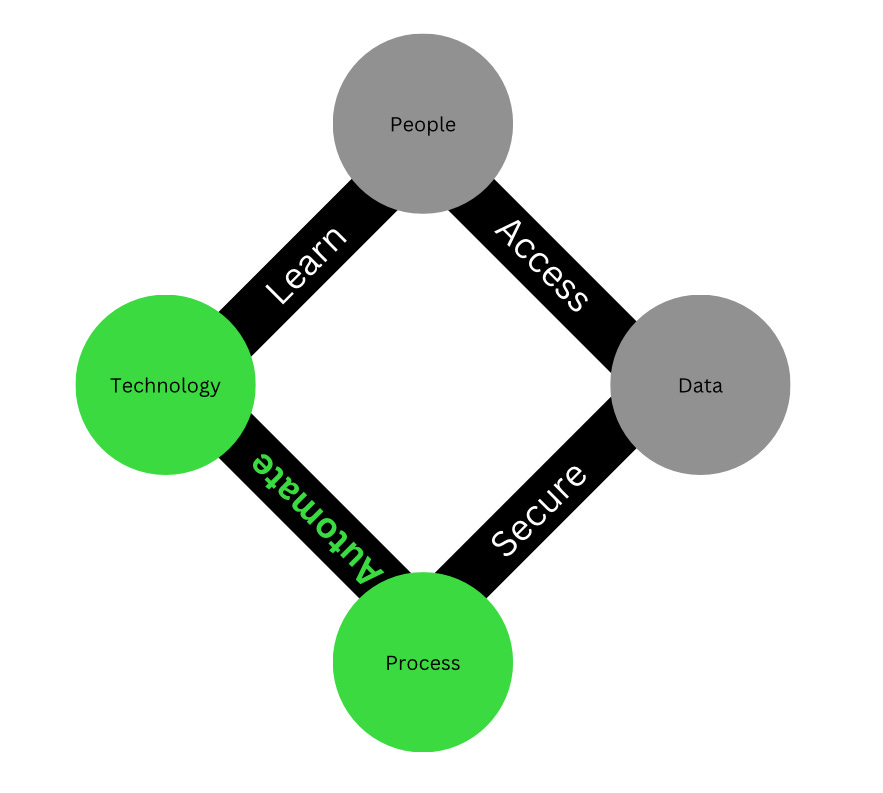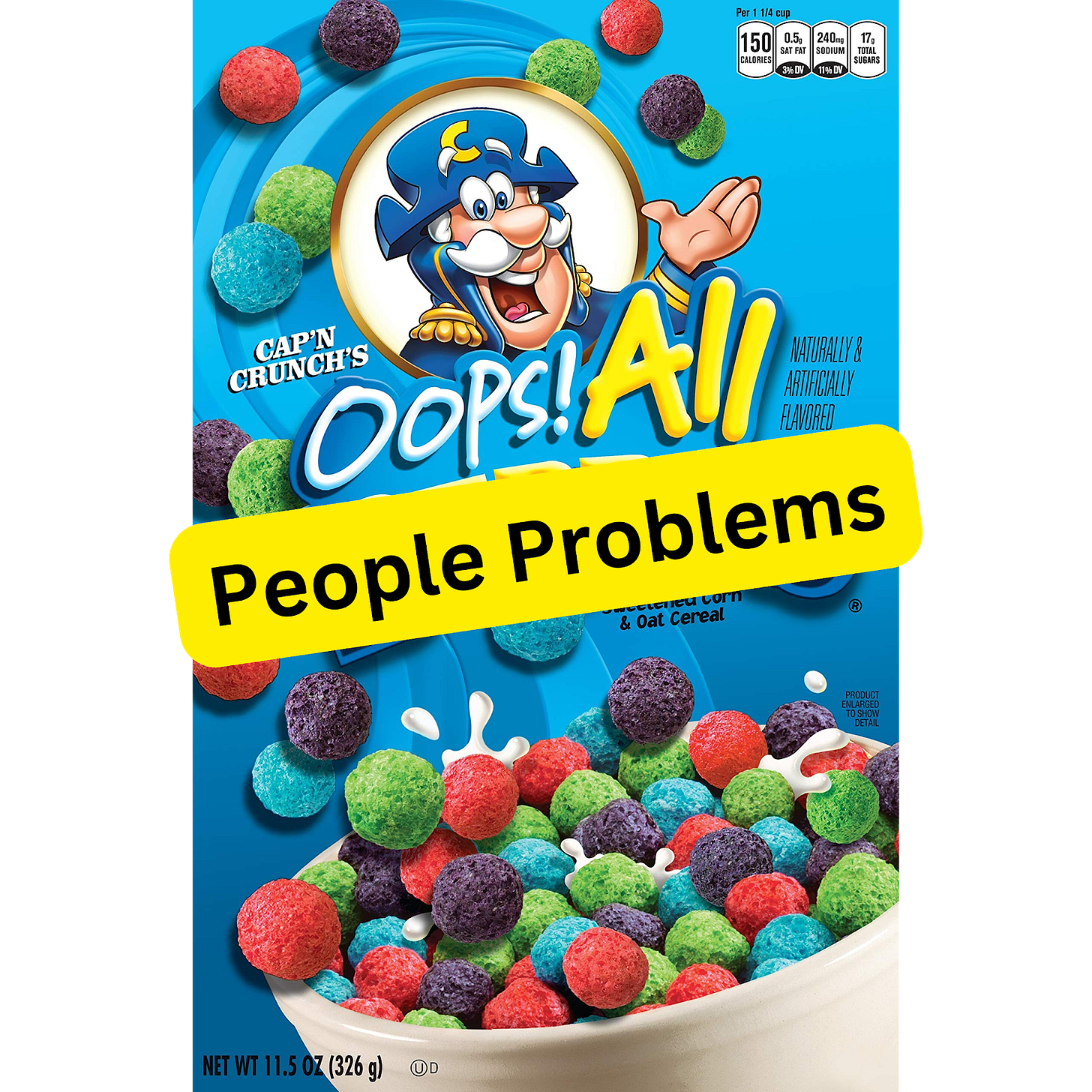AI (In)Action: Why Most Companies Are Stuck and How to Move Forward
AI isn't working for most businesses (yet)... Let's discuss why, and what you can do to buck the trend.
Over the past few months, I’ve had the same conversation with a variety of business leaders, each at different stages of the tech adoption curve. And one trend is glaringly obvious…
Companies everywhere are struggling to adopt AI.
To be clear, they're not struggling to spend money on AI. In fact, according to a CNBC survey of technology executives, artificial intelligence is the single-largest technology spending budget line item for the next year at 44% of companies. But are they getting teams to use these tools? Are they gaining any efficiency? Are they unlocking new opportunities with this technology? Are they able to measure the efficacy of any of this?
For most organizations, the answer is a resounding “no” across the board. In that same survey, it’s noted that a large portion of that budget is going to employee adoption, not the tech itself.
In a fantastic episode of the How to SaaS Podcast, Shiv Narayanan and Richard Lichtenstein of Bain & Company talked about this very issue. AI adoption is something every organization is thinking about and investing in today, but very few are deploying it in ways that they see any value.
So what’s going on here? Why is this transition so challenging? And what can our organizations do to shorten this learning curve?
There are a ton of answers to those questions, but few of them provide actionable next steps. All of the following answers are true, but they’re not useful…
It’s early innings and we’ll learn more as more companies adopt this technology.
Our internal data isn’t good enough for an AI model to be able to glean value from it.
We haven’t documented our processes and context well enough for generative AI to be applicable.
We don’t have the talent in-house to learn how to adopt this new technology.
If I wanted to truly understand our current AI adoption problem, I needed to dig deeper into how it’s been solved in other contexts… After all, the generative AI revolution isn’t the first time businesses have adopted AI. Let’s find some people who have solved this problem before and see how they handled it.
Understanding Google Cloud’s AI Adoption Framework
To better understand why companies are struggling with broader AI adoption, I needed to find a mental model to hook some ideas on. As it turns out, Google Cloud put together an AI adoption framework a few years ago that provides some clarity.
I find it absolutely remarkable that this framework, which was developed long before ChatGPT and generative AI entered the lexicon, so accurately reflects the barriers I'm seeing in so many organizations today.
Now, let's break this down into its component parts to guide us and identify what actions you can take today to advance your organization’s AI adoption…
There are four major nodes connected by six vectors. Each vector describes the problems that you’ll need to solve between the two key nodes to effectively implement AI in your organization.
Nodes - The Building Blocks of AI Adoption
Technology: The models and tools themselves
Process: The systems and standard operating procedures that your business leverages
Data: All of the internal knowledge your company has today
People: Your employees and vendors
Vectors - The Actions You Can Take
Each vector connecting two nodes is a sub-category of action you can take within your organization to improve AI adoption. In this video walkthrough, they explore a maturity scale that helps you benchmark your current efforts. I want to simplify this even further, though. I want to use this framework to assess broader trends, which requires a bit more abstraction.
To simplify, let’s just think about the major nodes and vectors.
Full transparency: For the purpose of this article, I’m going to ignore the “Secure” vector that connects Process and Data. I’m sure that’s an important component to AI adoption in many organizations, but I’m not knowledgeable about it and I’m not going to pretend to be for the sake of content™️.
Learning: Connecting People to Technology
The first vector I’ve heard about from executives is “Learn,” connecting people and technology. Don’t get me wrong, this is essential, and where we’re seeing the most interest from executives in this category right now, but I think this vector is rife with wishful thinking that we must guard against.
“If I could only train my people on AI” and “If I could only hire people with these skillsets” is fool’s gold. It sounds like a wonderful solution on paper, but in isolation, it’s insufficient.
The mistake I see made here is an over-indexing on prompt engineering and output as an objective. There’s a dramatic under-indexing on training on process and data management that’s the actual glue holding this technology together. There’s also no training I’ve found that’s sufficient for training managers and leaders on how to effectively lead a team through this evolution.
This isn’t about training your team on how to prompt ChatGPT. It’s about training them on how to think differently about their work.
Take, for example, a couple friends of the Substack, Santi Jaramillo and James Paden, who are currently running training workshops on unlocking value from generative AI in your business… While some of the content may focus on prompt engineering or fundamental differences between various LLMs, the value is in finding the practical applicability in your business. What are other leaders doing, what’s working, and how can you level-up with those insights? Ultimately, this will be a function of your ability to seek out the right community-led discussions to advance your own knowledge.
Access: Connecting People To Data
“Access” connects people and data. This is the most misunderstood piece of the puzzle for most organizations. A lot of organizations dramatically overestimate their maturity here.
Honestly, I don't love the word “access” in this context because I think it's misleading. It's not enough to simply open up your data so that employees have access to it, it's about structuring your data in ways that make it easily discoverable and useful for both your people and your AI models.
We also need to consider the fact that your people aren't just the consumers of data in your business, they're also the producers of the data in your business.
If we're trying to move the needle here, it's insufficient to only focus on expanding access to data… We need to marry these components with the process components necessary to make data standardization easy.
Automation: Connecting Process To Technology
Automate connects process and technology.
As someone who has witnessed the magic of effective revenue operations, I’d argue that this is one of the most solved pieces of this puzzle. It’s hard, and requires a team, but getting your technology to implement processes is a very solvable problem.
That said, getting clarity on your processes and decision making processes to change those processes is incredibly hard. This may be the least solved node on the board.
All this is to say, while the automation of processes with technology seems straightforward, don't let process documentation slip under your radar. This is the backbone of hitting effective scale with your AI initiatives and institutional knowledge that lives in team members’ heads is a threat.
Now that we’ve walked through some of the key challenges to AI adoption, where does that leave us and what can we do to accelerate AI adoption in our organizations?
I fear I have some good news and some bad news…
Oops! All People Problems
The good news is, after talking to a lot of folks about this, I think I know where your adoption issues lie. The bad news is, it’s probably your people, and it’s probably your fault.
It’s not that your people are bad, incompetent, or incapable of learning… I think most of those problems come back to leadership not understanding what is required to enable their team’s success. Every issue in this adoption framework is one degree of separation from a people problem…
What causes bad automation? When your tech and processes break across departments? Usually leadership mistakes.
What causes your people not to have access to the right data? Usually a lack of enablement from leadership.
What causes a lack of effective tech usage? Usually a lack of coaching and training from leadership.
This is why I talk about the evolution of leadership in this era far more than I talk about specific tech or prompt engineering. Leaders’ jobs are becoming increasingly about being the conduit between your people and your data, technology, and systems. You must be a robust systems-thinker with some great first-principles thinking chops to thrive in this role.
Google’s leadership team laid it out like this… If you want to make AI adoption go smoothly in your organization, focus less on the specific tech and more on the talent you need.
What Do We Do With This?
I promised we’d come back to actionable insights, so let’s walk through a few things you can start doing today that will move the ball forward and help you start to get your arms wrapped around these issues.
Shift your mindset: Our internal data and documentation is our single most important moat. Everything else can be copied instantly. Our learnings, institutional knowledge, and operational efficiency can’t be copied. We need every leader in our organization to adopt this mindset and commit themselves to relentlessly pursuing effective data and documentation to better train current and future AI models.
Look for talent hiding internally: Most organizations are struggling, not because no one in the company “gets it,” but because you're trying to replace Giambi, but you can't do it. What you might be able to do is recreate an AI expert in the aggregate. Think about each of those vectors…
Learn: Who is good at helping people adopt new technology? Maybe it's someone tech forward like an engineer, but maybe it's customer support or success. Look for people in-house who are great at knowledge transfer.
Access: Who is good at taking a bunch of information and training machines to interpret it? I know at least one example in every marketing department… SEO writers are world-class at making information crawlable by a machine. Don’t overlook them just because they’re used to a different application of this skillset.
Automate: Know anyone on your team who is extremely process-minded? Engineers or data scientists may fit the bill… If you use DISC, you’re looking for High Cs… “Left brains…” Maybe someone in product who is especially adept at product workflows. Who is great at acing the “how to make a peanut and butter jelly sandwich” instruction prompt?
Learn like you’ve never learned before: The pace of change is accelerating and your organization needs to become sponges when it comes to identifying and capitalizing on the promise of AI. In addition to subscribing to a minimum of 3-5 AI-focused content feeds, seek out workshops that can advance you and your team’s knowledge with practical use cases and examples.
Ultimately, the future is in our hands here, but we only have so long to capitalize. The organizations who turn generative AI into a multiplier for their businesses will see outsized returns in the coming decade, and those who wait until the best practices are settled to adopt will suffer. I know which camp I want to be in.
What questions do you have about AI and the future of work? Comment on this post or send me an email at timhickle@gmail.com. I just may feature your question in a future article.




